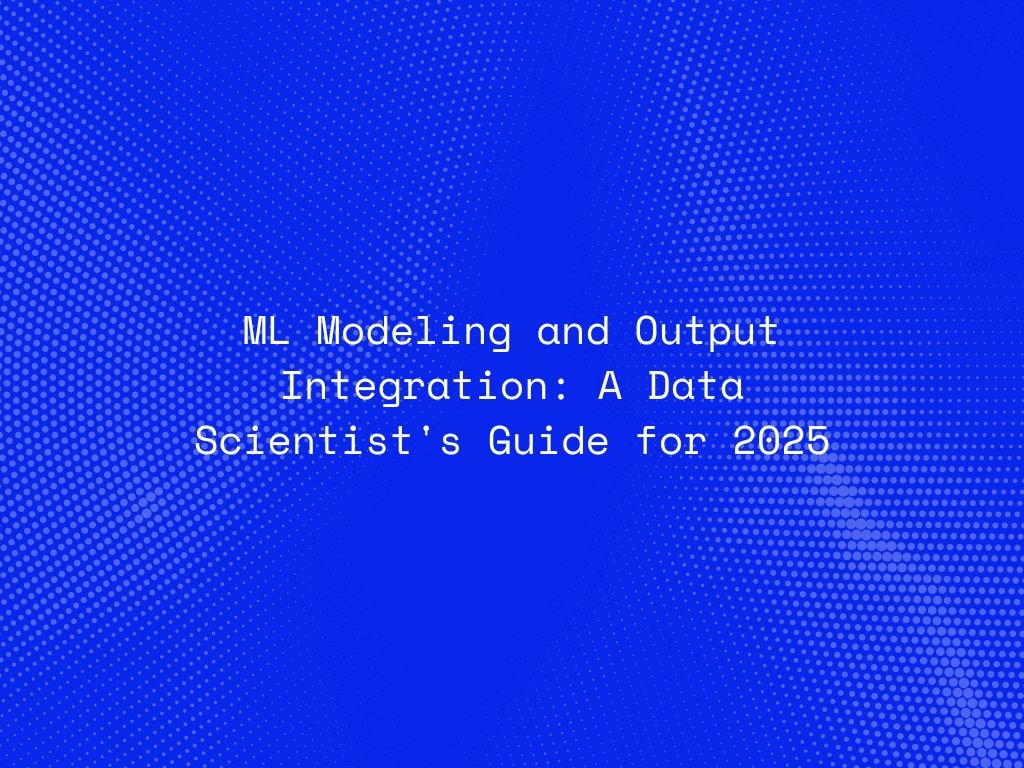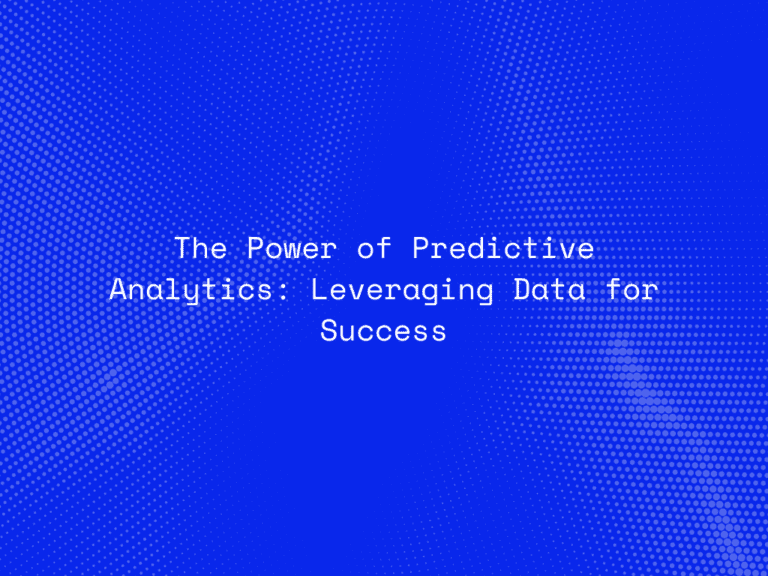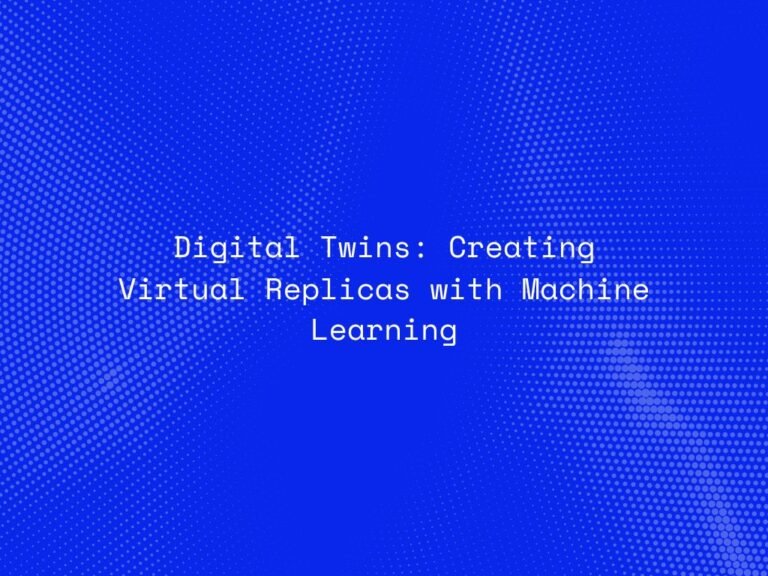Machine learning (ML) has rapidly evolved, and in 2025, it is more integrated, scalable, and business-driven than ever before. However, many data scientists still struggle with one crucial challenge—seamlessly integrating ML models into real-world applications. An accurate model is only valuable if its predictions are effectively deployed, accessible, and actionable.
This guide explores modern ML modeling techniques, output integration strategies, deployment best practices, and the latest trends shaping ML in 2025. Whether you are a data scientist, ML engineer, or business leader, this guide will help you navigate the evolving landscape of ML-driven decision-making.
The Evolution of ML Modeling in 2025
ML modeling has shifted from traditional batch processing models to real-time, adaptive, and edge-based solutions. Some of the key advancements in 2025 include:
- Self-Supervised and Few-Shot Learning – Reducing reliance on large labeled datasets.
- Hybrid AI Models – Combining ML with symbolic AI and knowledge graphs for more explainable AI.
- Automated Machine Learning (AutoML) – Making model selection, hyperparameter tuning, and feature engineering more efficient.
- Federated Learning – Enabling decentralized learning while preserving privacy.
- ML for Edge Computing – Deploying lightweight models directly on IoT devices and embedded systems.
These advancements mean that ML is no longer limited to research labs but is widely adopted across industries, from healthcare and finance to manufacturing and smart cities.
Building Robust ML Models: Best Practices
To develop ML models that are scalable, explainable, and production-ready, data scientists must follow these key best practices:
1. High-Quality Data Preprocessing
- Handle missing values, outliers, and data imbalances effectively.
- Use feature engineering to extract relevant insights.
- Leverage data augmentation and synthetic data where real-world data is limited.
2. Model Selection and Optimization
- Use AutoML for rapid model selection and hyperparameter tuning.
- Apply ensemble learning (e.g., stacking, bagging, boosting) for better generalization.
- Implement transfer learning to leverage pre-trained models for new tasks.
3. Explainability and Interpretability
- Use SHAP, LIME, or attention mechanisms to interpret black-box models.
- Ensure model transparency for regulatory compliance (GDPR, AI Act).
- Implement model monitoring to detect drift and bias over time.
4. Scalability and Efficiency
- Optimize models using quantization and pruning for efficient deployment.
- Leverage distributed computing (e.g., Apache Spark, Ray) for large-scale ML.
- Implement containerized ML workflows (Docker, Kubernetes, MLflow) for smooth deployment.

Output Integration: Bridging the Gap Between ML Models and Real-World Applications
Developing an ML model is just the beginning—integrating its output effectively into business processes is what drives real impact. Here’s how organizations in 2025 are successfully integrating ML into their workflows:
1. API-Based Model Deployment
- Deploy models as RESTful APIs or GraphQL services for seamless integration.
- Use cloud-based ML platforms like AWS SageMaker, Google Vertex AI, or Azure ML.
- Implement model versioning and A/B testing for continuous improvement.
2. Embedding ML in Business Applications
- Integrate ML predictions into CRM, ERP, HRM, and supply chain platforms.
- Use real-time dashboards (Tableau, Power BI, Looker) for decision-making.
- Enable automated workflows with AI-powered RPA (Robotic Process Automation).
3. Edge AI and IoT Integration
- Deploy lightweight models on edge devices and IoT sensors for real-time analytics.
- Use TensorFlow Lite, ONNX, or NVIDIA Jetson for edge-based ML processing.
- Optimize energy-efficient models for smart cities, autonomous vehicles, and industrial automation.
4. Stream Processing for Real-Time Decision Making
- Implement Kafka, Flink, or Apache Pulsar for real-time ML inference.
- Process streaming data from social media, finance, and IoT networks.
- Deploy real-time fraud detection and predictive maintenance systems.
Challenges in ML Model Deployment and Integration
Despite advancements, ML model deployment and integration still face several challenges:
- Model Drift & Performance Degradation – Continuous monitoring and retraining are essential.
- Scalability Issues – Handling large-scale inference workloads requires optimized architectures.
- Ethical & Regulatory Compliance – Ensuring fairness, transparency, and compliance with AI regulations.
- Data Security & Privacy – Protecting sensitive data using homomorphic encryption and differential privacy.
- Cross-Platform Compatibility – Ensuring ML models work across cloud, on-premise, and edge environments.
Overcoming these challenges requires robust MLOps strategies, automated monitoring, and a deep focus on ethical AI practices.
The Future of ML Model Integration in 2025 and Beyond
The landscape of ML integration is continuously evolving, with emerging trends shaping the future:
1. AI-Augmented Decision Making
AI will support human decision-making rather than replace it, ensuring more context-aware recommendations and explainability.
2. Generative AI in ML Integration
LLMs (Large Language Models) and Generative AI will automate ML development, making integration faster and more efficient.
3. Fully Automated MLOps Pipelines
MLOps will become more autonomous with CI/CD pipelines for ML models, automated retraining, and self-healing systems.
4. Decentralized ML (Blockchain + AI)
Blockchain and Federated Learning will enable secure, decentralized ML model training and sharing without exposing sensitive data.
5. AI-Orchestrated Edge Computing
More ML models will be deployed at the edge, processing data closer to the source, reducing latency, and enhancing real-time AI decision-making.
Conclusion
ML modeling and output integration have become critical for organizations leveraging AI to drive business value. While model development remains a key focus, seamless deployment, integration, and scalability are equally important in ensuring ML’s real-world impact.
To stay ahead in 2025, data scientists and ML engineers must embrace automated MLOps, scalable deployment frameworks, explainable AI, and real-time model integration strategies. Organizations that successfully implement ML at scale will gain a significant competitive advantage in innovation, efficiency, and decision-making.
The future of ML lies in fully automated, explainable, and real-time AI systems that drive actionable insights across industries. Are you ready to integrate ML into your business strategy?




